Board game publisher Gale Force Nine has been quietly building up an impressive line-up of games based on TV shows. Many in the board game community cringe when they think of a "licensed game:" popular brands being shoehorned into successful games, seemingly at random.
Gale Force Nine is different.
Its latest effort, Homeland: The Game, looks to continue this streak of success with a hidden roles-style game based on the popular Showtime espionage thriller. Unfortunately, after finishing our playthrough of Homeland: The Game, all I could think about was other, better hidden roles games already out there.
At the very start of Homeland: The Game, players each take on a role that nobody else can know: Loyal Agent, Political Opportunist and Terrorist Mole. Because of the way these roles are dealt out, it is possible in any game that there are no moles, with all players paranoid that there is one. Trust no one and question every move made on the board.

After roles are dealt out, it becomes time to start populating the Terrorist Threat board. The board is laid out according to a threat's urgency, with imminent attacks on top. Each threat gets "claimed" by a player, making them the lead agent for the case. It's up to this player to ensure their mission goes the way they want it to go. To do this, players take Intel cards that have either a red or blue number printed on the back and secretly place these cards on top of the terrorist threats. Once it comes time to resolve the threat, the blue and red numbers are tallied up. If there is a higher blue total, the CIA wins and successfully eliminates that particular threat. If there are more red numbers, then the terrorists have pulled off one of their plots.
One of the key rules when laying out Intel cards is that one of the two cards that a player can place on his or her turn MUST go towards another player's terrorist plot. This ensures that a potential terrorist mole will look less suspicious if he or she happens to be sabotaging their neighbor's threat.
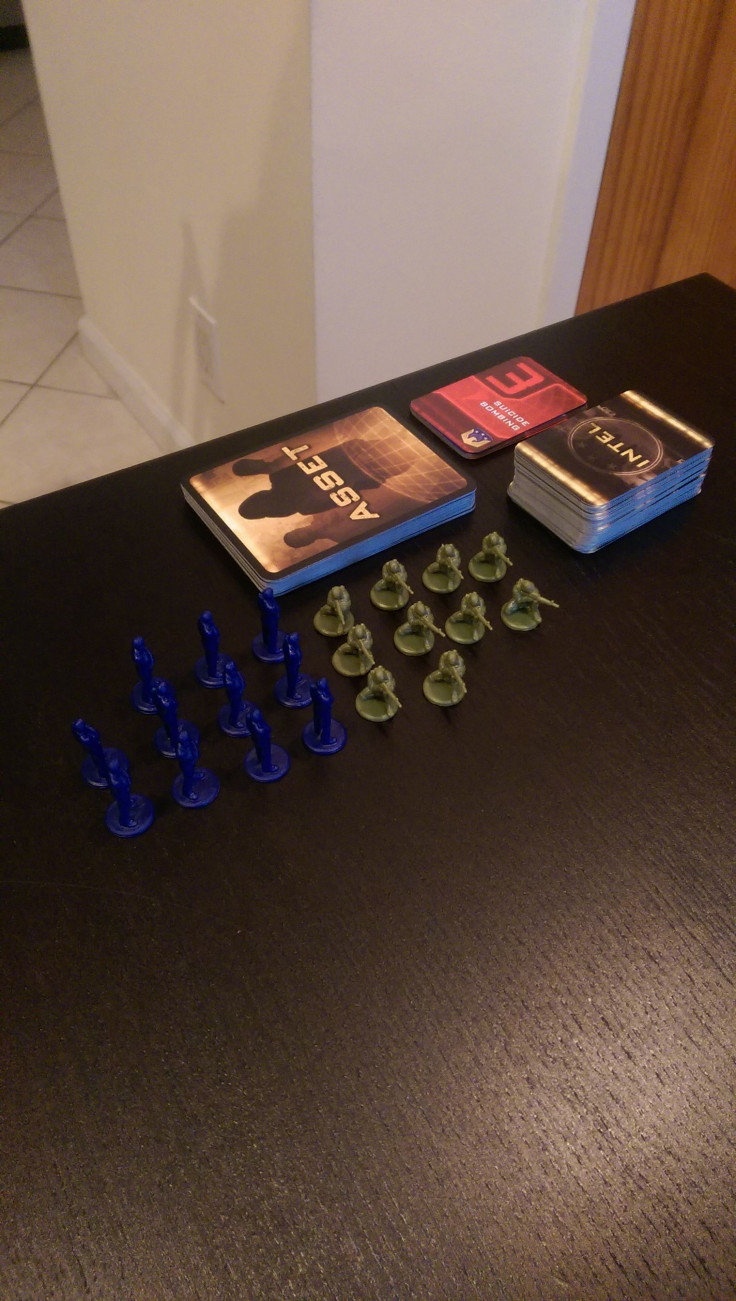
Once a full round has passed with every player laying down Intel cards and performing other random tasks, the board gets a turn. All threats get bumped up one on the board, with the top-most threats getting resolved first. The threat cards get taken to a side board where the red and blue scored are counted and the threat is deemed a terrorist or CIA win.
If it is an Agency win, the score markers for the Agency raises and the lead agent gets some bonus rewards. If the threat succeeds for the terrorists, the terrorist score raises and penalties get handed out. Generally the lead agent will be the only one to have any penalties, but occasionally a threat can impact everyone playing and not just one player.
The last key component to knowing what is going on with Homeland: The Game is the tokens. There are two kinds of tokens that players can earn: Agency tokens and Political Clout tokens. They generally are earned by resolving terrorist threats, but can also be bought by trading in Intel cards. These tokens can either be traded in to purchase powerful Asset cards or can be saved for the end of the game.
Once the score for either the Agency or Terrorists reaches the maximum, the game immediately ends. Loyal Agents get points for the number of Agency tokens they have at the end of the game, while Political Opportunists earn points from the Political Clout tokens they have. Terrorists do not gain points from these tokens.
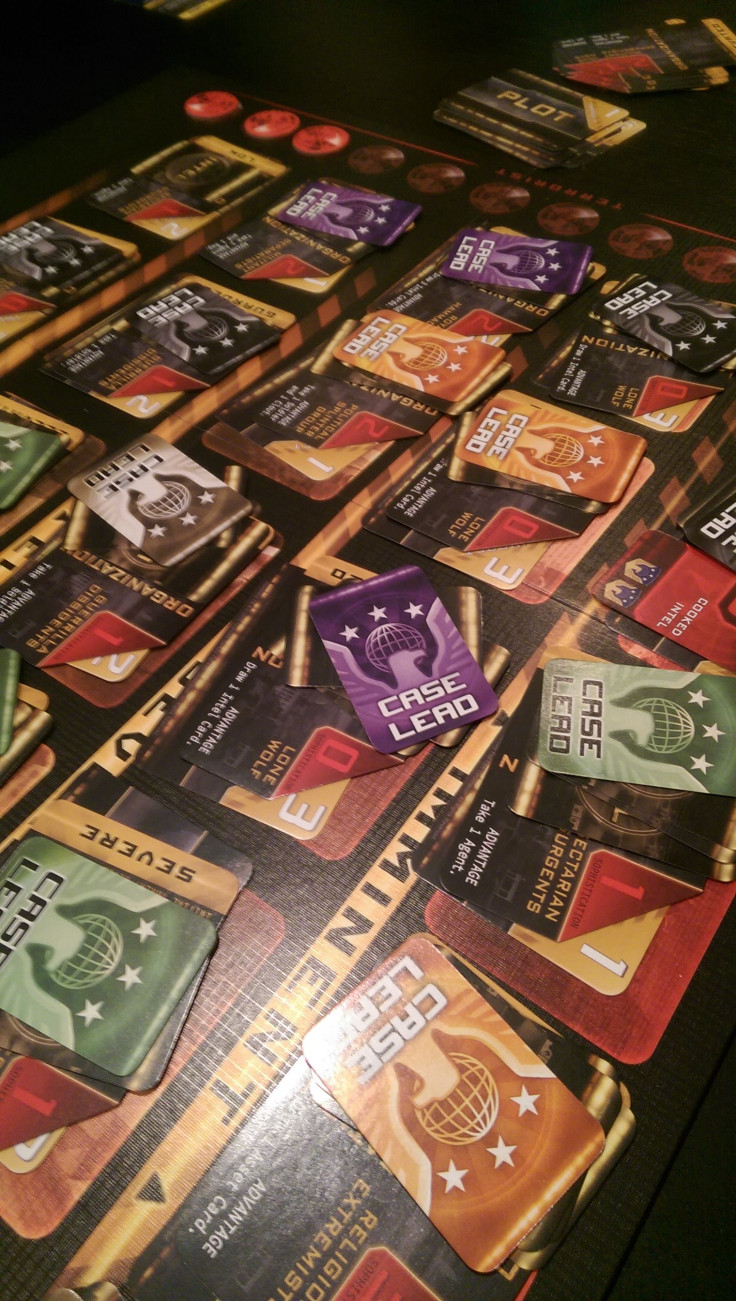
Due to the blind nature of laying out Intel cards, tracking the tokens other players keep and trade in is by far the easiest way to see which side a player may be falling on. A stockpile of Agency tokens, for example, is a definite indicator that that player is a Loyal Agent. If a terrorist player is smart, they would play with these tokens to ensure others have doubts for true motivations.
Other actions include deploying troops and agents to a mission. This allows the player to look at all of the Intel cards to see what the threat is currently looking like and what colors are needed to sway the threat to your desires. Agents can also be deployed to look at the threat, but not the Intel cards. You can see how large of a gap the Intel cards need to overcome and the perks of success or the ramifications of failure for the threat.
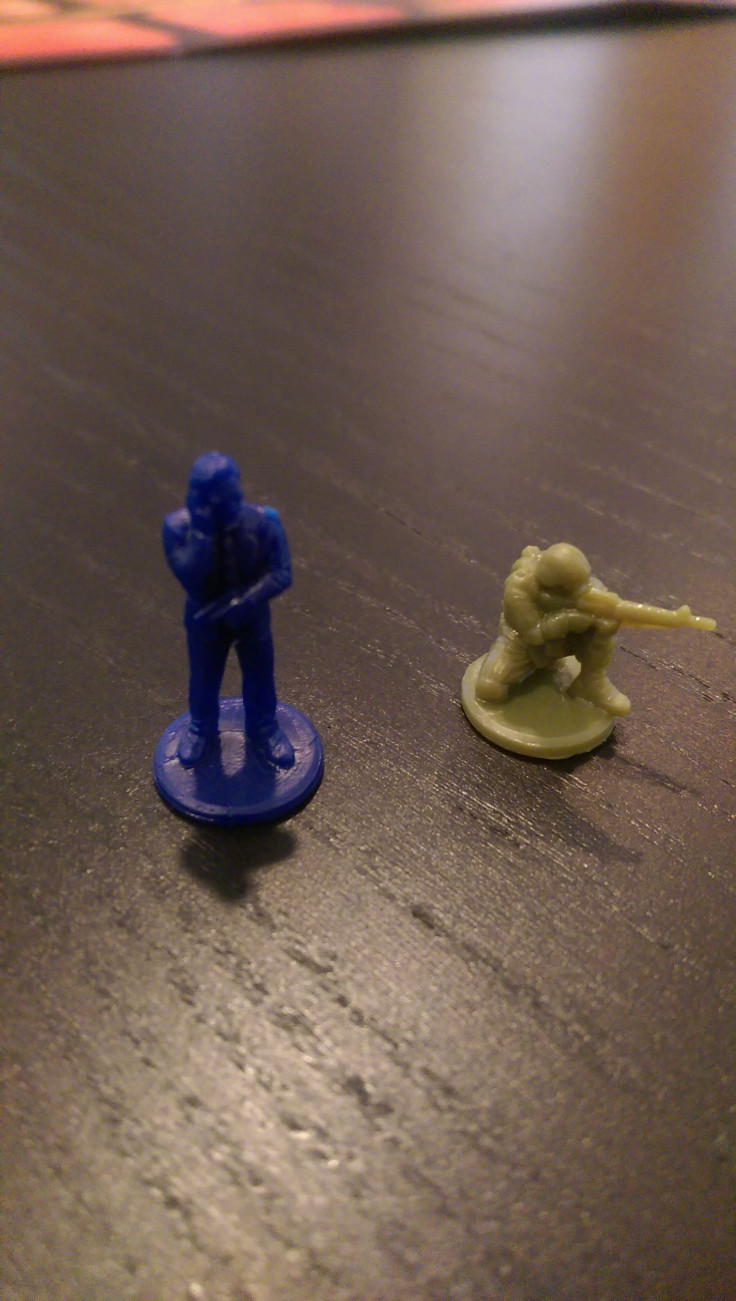
The game ends once either the Agency or Terrorist victory track gets filled. If the terrorist track gets filled first, then the terrorist mole wins outright. If the Agency wins, then it enters into a whole flowchart of deciding the true winner. Everyone gets to vote on who they think the terrorist mole is, and if even one person is right, the mole can lose again. From here, it boils down to victory points scored from tokens and Asset cards. This means that even though the Loyal Agents all want to work together, they still need to be looking out for themselves if they want to win at the very end.
In terms of components, Homeland: The Game looks great. The board is clear and minimalist while still conveying all of the information it needs to. Terrorist plots are actually composed of two cards with one cut in a way that they can lay on top of each other to look really cool. Even the mini figures for the soldiers and agents are high quality. If you have never watched the TV show Homeland, don't worry. There's nothing here that having a knowledge of the show is crucial for, so it is possible to enjoy Homeland: The Game without knowing Homeland the show.
One of the major selling points for Homeland: The Game is that it features a hidden role mechanic that revolves around other actions. This sets it apart from simpler hidden role games like Coup or The Resistance, where figuring out everyone's hidden roles is largely the entire point of the game. Homeland: The Game also aims to contain an entire experience in only 60-90 minutes, making it a much shorter playtime than similar games like Battlestar Galactica, which can easily stretch past the three hour mark.
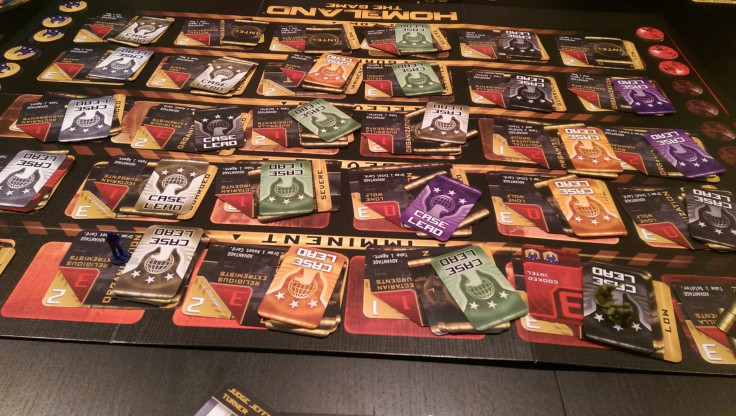
Unfortunately, unlike Battlestar Galactica, it felt like there were too many threats and not enough input to make a difference. Each terrorist threat already begins in the red terrorist number, so to swing a threat to have a higher blue number requires multiple cards and a joint effort from players that don't necessarily want to work together. If a new terrorist plot were to come into play on an elevated threat level, it will still usually become a terrorist victory because there just wasn't enough turns to make it into the blue. Not having a say in an outcome is upsetting, especially since there are so many of them over the course of Homeland: The Game.
I also wasn't a big fan of the end, with Homeland: The Game's desire to boil everything down to one ultimate winner. It feels like a big team accomplishment in games like Battlestar Galactica when the humans make the last jump and are free from Cylon attacks. When one Loyal Agent wins over all the others, it feels almost like a stab in the back. You worked so hard as a team to eliminate these terrorist threats only to be told that you weren't as good as your friend across the table. Heck, you could have been the most helpful Loyal Agent by using all of your resources to eliminate the terrorists and still lose because your partner decided to instead stockpile tokens.
I feel like Homeland: The Game is one that gets better the more you play it, and definitely gets better if you continue to play it with the same group of people. This will allow for you to develop strategies about picking up tokens and laying down Intel cards to completely blind your opponents to your motives. The first few playthroughs make it very obvious which way players are approaching their roles, especially when you are inexperienced.
If you want a quick and fun hidden roles game, go for something like Ultimate Warewolf, Coup, or The Resistance. If you're looking for a sprawling hidden roles game that will take all night to finish, definitely go with Battlestar Galactica, as it is one of my favorite games of all time. If you still are looking for more hidden roles style games, you certainly could do worse than Homeland: The Game, but it would not be my first choice. It's definitely an easier pitch to non-gaming friends who don't want to sit down for a three to four hour game though, and that difference could be all you need.

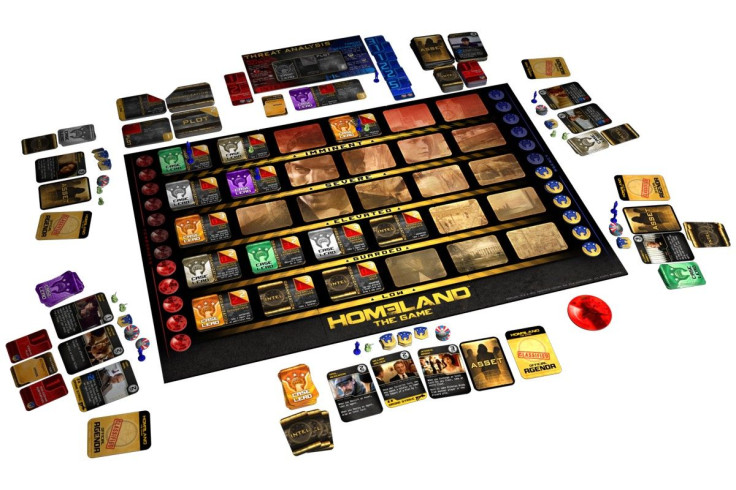












![[EG April 19] Best 'Stardew Valley' Mods That Will Change](https://d.player.one/en/full/226012/eg-april-19-best-stardew-valley-mods-that-will-change.png?w=380&h=275&f=955520b8313253ee3c39c791f6210f38)



